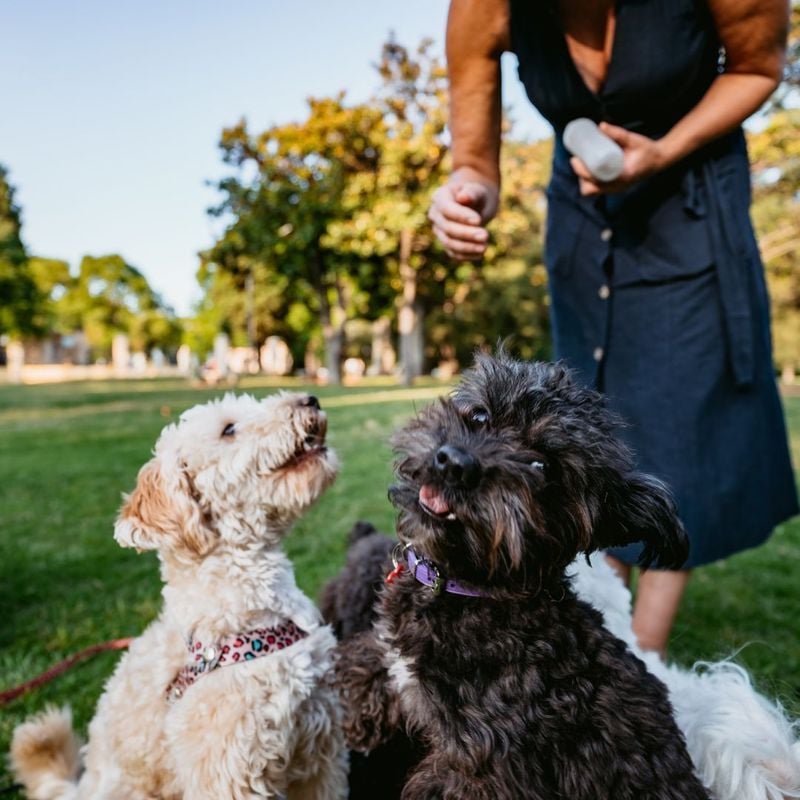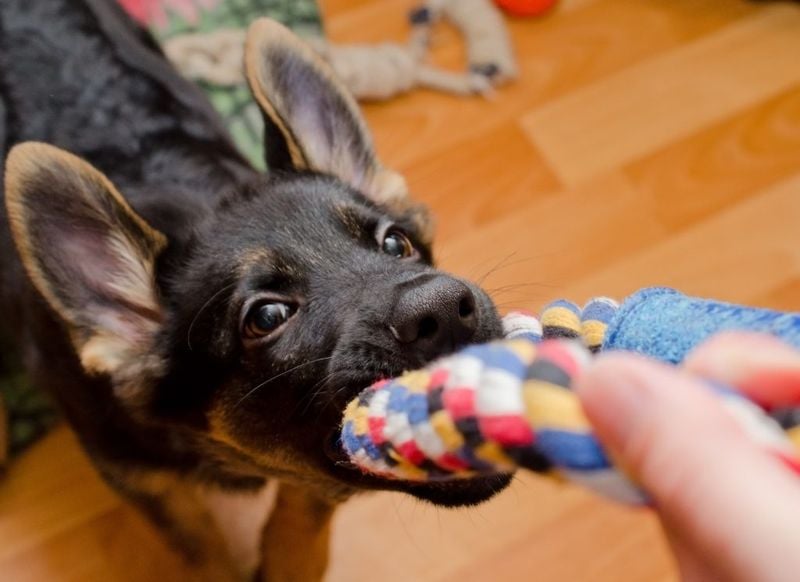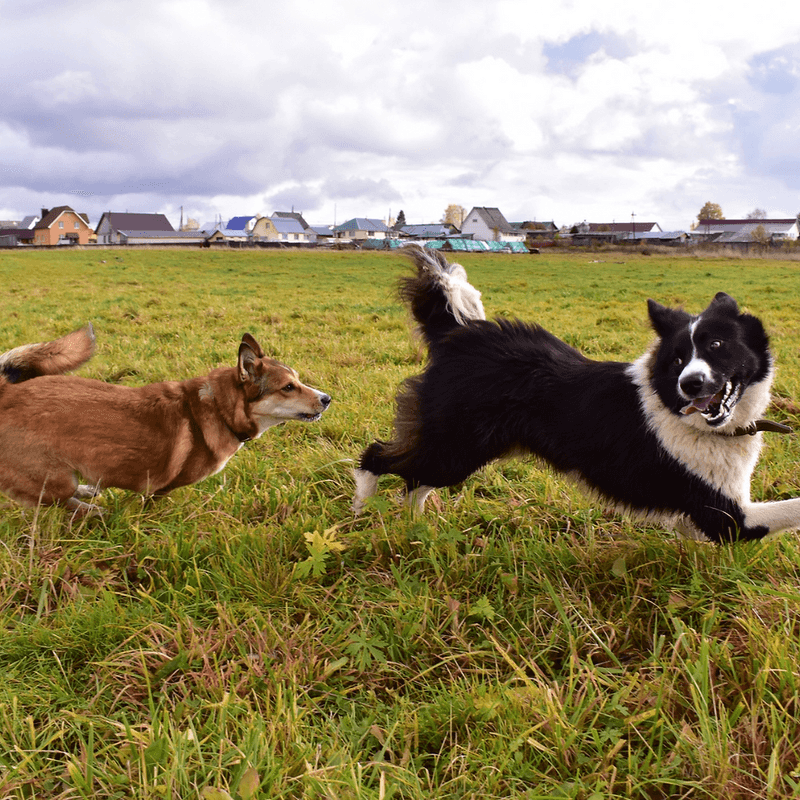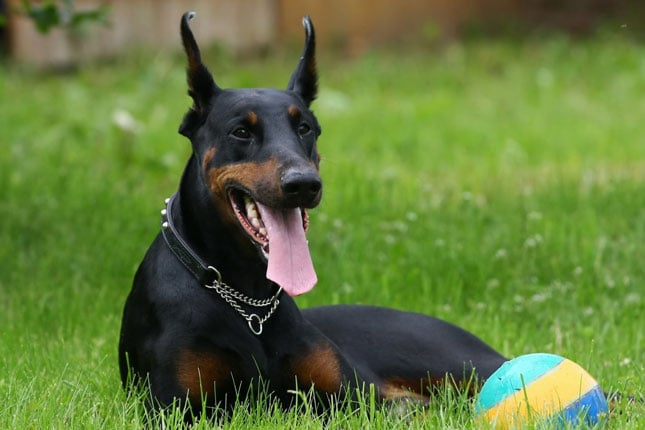11 Surprising Things No One Tells You About Your Dog’s Teenage Years
Just when you thought your puppy was finally getting the hang of house training and basic commands, they hit the teenage phase. Around six months of age, your sweet little pup transforms into a rebellious adolescent with a mind of their own.
This challenging period can last until they’re 18-24 months old, depending on the breed. Understanding what’s happening during this crucial developmental stage will help both of you survive the teenage dog drama with your relationship intact.
1. Hormone Hurricanes Hit Hard
Your once-obedient puppy suddenly seems possessed by a furry demon. The culprit? A tsunami of hormones flooding their developing body. These biological changes affect males and females differently but impact both dramatically.
Males might start marking territory inside your home or become fixated on female dogs. Females experience their first heat cycles, bringing mood swings and behavioral changes. Even spayed/neutered dogs go through hormonal shifts.
Think of it as doggy puberty – awkward, unpredictable, and necessary for development. Their brains are rewiring while their bodies mature, creating the perfect storm of teenage drama.
2. Selective Memory Loss Syndrome
Yesterday, your dog sat perfectly on command. Today, they look at you like you’re speaking Martian. This frustrating phenomenon happens because adolescent dogs genuinely experience temporary training amnesia.
Their developing brain prioritizes new experiences over established commands. The sit, stay, and come that took months to perfect seem mysteriously erased from memory. Veterinary behaviorists confirm this isn’t stubbornness – it’s developmental.
Keep training sessions short, upbeat, and consistent. Return to basics if needed, using high-value treats to refresh their memory. Remember that patience now prevents behavior problems later when their adult brain finally catches up.
3. Boundary-Pushing Becomes An Olympic Sport
“What happens if I chew this expensive shoe instead of my toy?” Your teenage dog isn’t just being naughty – they’re conducting scientific experiments about how their world works. This natural boundary-testing helps them understand their place in your family pack.
You’ll notice them watching for your reaction when breaking rules they clearly know. They might dash through open doors, counter-surf with newfound height, or ignore recall commands at the dog park. Each test is gathering important data.
Remain calm but firm. Consistent boundaries actually provide security for your confused adolescent pup, even when they seem determined to find every loophole in your household rules.
4. Fear Periods Make Brave Dogs Skittish
Your formerly confident puppy might suddenly develop bizarre new fears. That garbage can they’ve passed a hundred times? Now it’s a monster! This unexpected development occurs because adolescent dogs go through distinct fear periods.
During these windows, their brain processes potential threats differently. A traumatic experience during a fear period can create lasting phobias. Common triggers include unfamiliar objects, loud noises, or strange people wearing hats.
Handle these episodes with gentle encouragement rather than forcing exposure or overly coddling. Create positive associations with scary things using treats and praise. Most dogs emerge from fear periods naturally if you maintain a supportive, matter-of-fact attitude.
5. Social Skills Need Refresher Courses
Remember that perfectly socialized puppy who greeted every dog with appropriate play bows? During adolescence, they might suddenly forget canine etiquette. Your teenage dog may become overly exuberant, inappropriately dominant, or unexpectedly shy with other dogs.
Their changing status from puppy to adult requires learning new social rules. Adult dogs no longer give puppies a free pass for rude behavior. Watch for mounting, intense staring, or resource guarding – signs they’re testing their rank.
Carefully managed playdates with stable adult dogs provide natural corrections better than human intervention. These mentors teach boundaries your adolescent needs to succeed in the dog world without damaging their confidence.
6. Energy Levels Reach Supernatural Heights
Your teenage dog’s energy surge feels like someone replaced your pet with a perpetual motion machine. They bounce off furniture, zoom around the yard, and seem physically incapable of settling down. This dramatic increase happens because their adult muscles and stamina develop before their adult brain’s impulse control.
Without appropriate outlets, this energy transforms into destructive behaviors. Shredded cushions, dug-up gardens, and chewed baseboards aren’t personal attacks – they’re symptoms of unmet physical needs.
Mental stimulation tires them as effectively as physical exercise. Try puzzle toys, training games, and scent work alongside regular exercise. Remember that an exhausted teenage dog is a well-behaved teenage dog!
7. Snappy Attitudes Toward Other Dogs
Your formerly friendly pup starts growling at dogs they previously played with happily. This concerning change often appears around 8-10 months as they test their growing confidence and establish adult boundaries.
Males particularly may challenge other males, while females might become selective about playmates. This behavior isn’t necessarily aggression – it’s social maturation. Their communication becomes more nuanced as they transition from puppy to adult status.
Pay attention to subtle body language before snapping occurs. Stiff posture, raised hackles, or whale eye (showing whites) indicate discomfort. Redirect before tensions escalate, and consider working with a positive reinforcement trainer to help navigate this challenging phase.
8. Routine Becomes Your Secret Weapon
While your teenage dog tests every boundary, consistent routines provide the security they secretly crave. Their developing brain struggles with unpredictability during this chaotic internal phase.
Regular feeding times, potty breaks, exercise sessions, and training moments create a framework that reduces anxiety. When they know what to expect, they’re less likely to create their own entertainment through destructive behaviors.
Even minor schedule disruptions can trigger regression in house training or crate manners. Maintain as much consistency as possible, especially during transitions like holidays or moving. Your predictable responses to their unpredictable behavior form the foundation for a well-adjusted adult dog.
9. Growth Spurts Demand Nutritional Awareness
Those gangly legs and disproportionate paws aren’t just awkward-looking – they signal critical skeletal development. During adolescence, your dog’s nutritional needs shift dramatically as they build adult bone and muscle mass.
Large breeds particularly face risks if growth happens too quickly. Joint problems, hip dysplasia, and skeletal issues can develop from improper nutrition during this phase. Sudden weight gain or excessive protein can create lasting damage.
Consult your veterinarian about transitioning from puppy to adult food at the appropriate time for your specific breed. Monitor weight closely, keeping them lean but not skinny. The right nutrition now prevents painful mobility issues when they reach their senior years.
10. Patience Becomes Your Superpower
During moments when your teenage dog ignores commands they’ve known for months or destroys something valuable, remember: this challenging phase is temporary. The beautiful adult dog they’ll become is taking shape beneath the rebellious exterior.
Veterinary behaviorists confirm that how you handle this phase significantly impacts their adult personality. Harsh corrections or punishment during adolescence can create lasting fear and aggression issues. Conversely, maintaining calm consistency builds confidence.
Create a mental image of the adult dog you’re working toward. On difficult days, focus on small improvements rather than perfect behavior. Your patience now yields dividends in your future relationship with a stable, confident adult companion.
11. Your Lifetime Bond Forms Through Teenage Chaos
The most surprising secret about canine adolescence? This challenging period actually strengthens your relationship. Working through difficulties together creates deeper understanding and communication than puppy infatuation ever could.
During adolescence, your dog develops their adult personality and forms lasting impressions about trust, security, and your leadership. How you navigate conflicts becomes the foundation of your lifelong partnership.
Many owners surrender teenage dogs to shelters, mistaking normal developmental phases for permanent behavior problems. Those who persevere discover something magical on the other side – a mature, balanced companion who understands your unique communication style. The teenage chaos eventually transforms into the deep bond that makes dogs our most beloved companions.

















